Thermal Performance, Microstructure Analysis and Strength Characterisation of Agro-Waste Reinforced Soil Materials
Abstract
:1. Introduction
2. Materials and Methods
2.1. Materials and Samples Preparation
2.2. Methods Used
2.2.1. Thermal Test
2.2.2. SEM and EDX Analysis
3. Results
3.1. Thermal Conductivity
3.2. Microstructural Property Analysis
4. Discussion
- -
- First setting test (T = 20 °C, HR = 30%) λ ranged between 0.654 [W/mK] and 0.705 [W/mK].
- -
- Second test condition (T = 20 °C, HR = 50%) λ ranged between 0.719 [W/mK] and 0.801 [W/mK].
- -
- Third test condition (T = 20 °C, HR = 70%) λ ranged between 0.688 [W/mK] and 0.770 [W/mK].
5. Conclusions
- Short and medium fibre samples showed the best values of thermal conductivity, around 0.705 [W/mK].
- By analysing the SEM pictures and measuring the voids around the fibres, it was concluded that samples with longer fibres had smaller voids and no bundles. This is the reason for the high thermal conductivity measured. On the contrary, samples with shorter fibres exhibit bigger voids and bundles.
- These analyses are in accordance with measured thermal conductivity since a lower value of conductivity was obtained by samples with shorter fibre lengths where the bigger voids were detected.
- Control Sample ID 0, with the higher dry density, registered higher conductivity.
- The best performance was obtained with ID 20–25. In fact, this mix obtained low thermal conductivity, good compressive strength, and acceptable flexural strength.
- The addition of fibres to the mix determines the decrease in dry density from 1960.0 [kg/m3] to 1890.00 [kg/m3].
- The effects of fibre addition on the failure mode of samples improve the ductility of the material by changing the failure mode of samples.
- SWF addition causes a decrease in tensile strength, except for longer fibres where smaller voids were detected by SEM analyses; on the contrary, compressive strength is not particularly affected by fibre length.
Author Contributions
Funding
Institutional Review Board Statement
Informed Consent Statement
Data Availability Statement
Acknowledgments
Conflicts of Interest
References
- Fagone, M.; Kloft, H.; Loccarini, F.; Ranocchiai, G. Jute fabric as a reinforcement for rammed earth structures. Compos. Part B Eng. 2019, 175, 107064. [Google Scholar] [CrossRef]
- European Commission. The European Green Deal. Eur. Comm. 2019, 53, 24. [Google Scholar] [CrossRef]
- Achenza, M.; Sanna, U. Il Manuale Tematico Della Terra Cruda; DEI: Ivrea, Italy, 2009; Volume 1, p. 2. Available online: https://hdl.handle.net/11584/63365 (accessed on 1 May 2023).
- Parlato, M.; Porto, S.M.; Cascone, G. Raw earth-based building materials: An investigation on mechanical properties of Floridia soil-based adobes. J. Agric. Eng. 2021, 52. [Google Scholar] [CrossRef]
- Bouasria, M.; El Mendili, Y.; Benzaama, M.-H.; Pralong, V.; Bardeau, J.-F.; Hennequart, F. Valorisation of stranded Laminaria digitata seaweed as an insulating earth material. Constr. Build. Mater. 2021, 308, 125068. [Google Scholar] [CrossRef]
- Alsmo, T. Relative Humidity, RH (%), a Problem or Not in Swedish Buildings. J. Environ. Prot. 2019, 10, 1299–1316. [Google Scholar] [CrossRef] [Green Version]
- Shukla, A.; Tiwari, G.; Sodha, M. Embodied energy analysis of adobe house. Renew. Energy 2009, 34, 755–761. [Google Scholar] [CrossRef]
- Sabbà, M.F.; Tesoro, M.; Falcicchio, C.; Foti, D. Rammed Earth with Straw Fibers and Earth Mortar: Mix Design and Mechanical Characteristics Determination. Fibers 2021, 9, 30. [Google Scholar] [CrossRef]
- Galán-Marín, C.; Martínez-Rocamora, A.; Solís-Guzmán, J.; Rivera-Gómez, C. Natural Stabilized Earth Panels versus Conventional Façade Systems. Economic and Environmental Impact Assessment. Sustainability 2018, 10, 1020. [Google Scholar] [CrossRef] [Green Version]
- Muñoz, P.; Letelier, V.; Muñoz, L.; Bustamante, M. Adobe bricks reinforced with paper & pulp wastes improving thermal and mechanical properties. Constr. Build. Mater. 2020, 254, 119314. [Google Scholar] [CrossRef]
- Bories, C.; Borredon, M.E.; Vedrenne, E.; Vilarem, G.; Agamuthu, P. Challenges and Opportunities in Agro-Waste Management: An Asian Perspective What Is AgroWaste? J. Environ. Manag. 2009, 143, 186–196. [Google Scholar] [CrossRef]
- Koul, B.; Yakoob, M.; Shah, M.P. Agricultural waste management strategies for environmental sustainability. Environ. Res. 2021, 206, 112285. [Google Scholar] [CrossRef]
- Karade, S. Cement-bonded composites from lignocellulosic wastes. Constr. Build. Mater. 2010, 24, 1323–1330. [Google Scholar] [CrossRef]
- Raut, S.; Ralegaonkar, R.; Mandavgane, S. Development of sustainable construction material using industrial and agricultural solid waste: A review of waste-create bricks. Constr. Build. Mater. 2011, 25, 4037–4042. [Google Scholar] [CrossRef]
- Madurwar, M.V.; Ralegaonkar, R.V.; Mandavgane, S.A. Application of agro-waste for sustainable construction materials: A review. Constr. Build. Mater. 2013, 38, 872–878. [Google Scholar] [CrossRef]
- Kazmi, S.M.S.; Munir, M.J.; Patnaikuni, I.; Wu, Y.-F.; Fawad, U. Thermal performance enhancement of eco-friendly bricks incorporating agro-wastes. Energy Build. 2018, 158, 1117–1129. [Google Scholar] [CrossRef]
- Hafez, F.S.; Sa’Di, B.; Safa-Gamal, M.; Taufiq-Yap, Y.; Alrifaey, M.; Seyedmahmoudian, M.; Stojcevski, A.; Horan, B.; Mekhilef, S. Energy Efficiency in Sustainable Buildings: A Systematic Review with Taxonomy, Challenges, Motivations, Methodological Aspects, Recommendations, and Pathways for Future Research. Energy Strat. Rev. 2023, 45, 101013. [Google Scholar] [CrossRef]
- Losini, A.; Grillet, A.; Bellotto, M.; Woloszyn, M.; Dotelli, G. Natural additives and biopolymers for raw earth construction stabilization—A review. Constr. Build. Mater. 2021, 304, 124507. [Google Scholar] [CrossRef]
- Oskouei, A.V.; Afzali, M.; Madadipour, M. Experimental investigation on mud bricks reinforced with natural additives under compressive and tensile tests. Constr. Build. Mater. 2017, 142, 137–147. [Google Scholar] [CrossRef]
- Araya-Letelier, G.; Antico, F.; Carrasco, M.; Rojas, P.; García-Herrera, C. Effectiveness of new natural fibers on damage-mechanical performance of mortar. Constr. Build. Mater. 2017, 152, 672–682. [Google Scholar] [CrossRef]
- Mamun, A.; Rafii, M.Y.; Misran, A.B.; Berahim, Z.; Ahmad, Z.; Khan, M.H.; Oladosu, Y.; Arolu, F. Kenaf (Hibiscus cannabinus L.): A Promising Fiber Crop with Potential for Genetic Improvement Utilizing both Conventional and Molecular Approaches. J. Nat. Fibers 2023, 20, 2145410. [Google Scholar] [CrossRef]
- Laborel-Préneron, A.; Aubert, J.E.; Magniont, C.; Tribout, C.; Bertron, A. Plant aggregates and fibers in earth construction materials: A review. Constr. Build. Mater. 2016, 111, 719–734. [Google Scholar] [CrossRef]
- Parisi, F.; Asprone, D.; Fenu, L.; Prota, A. Experimental characterization of Italian composite adobe bricks reinforced with straw fibers. Compos. Struct. 2015, 122, 300–307. [Google Scholar] [CrossRef]
- Giroudon, M.; Laborel-Préneron, A.; Aubert, J.-E.; Magniont, C. Comparison of barley and lavender straws as bioaggregates in earth bricks. Constr. Build. Mater. 2019, 202, 254–265. [Google Scholar] [CrossRef]
- Jannat, N.; Hussien, A.; Abdullah, B.; Cotgrave, A. Application of agro and non-agro waste materials for unfired earth blocks construction: A review. Constr. Build. Mater. 2020, 254, 119346. [Google Scholar] [CrossRef]
- Bruno, A.W.; Gallipoli, D.; Perlot, C.; Kallel, H. Thermal performance of fired and unfired earth bricks walls. J. Build. Eng. 2020, 28, 101017. [Google Scholar] [CrossRef]
- Bogas, J.A.; Silva, M.; Gomes, M.D.G. Unstabilized and stabilized compressed earth blocks with partial incorporation of recycled aggregates. Int. J. Arch. Herit. 2018, 13, 569–584. [Google Scholar] [CrossRef]
- Oti, J.; Kinuthia, J.; Bai, J. Design thermal values for unfired clay bricks. Mater. Des. 2010, 31, 104–112. [Google Scholar] [CrossRef]
- Benkhadda, N.; Khaldoun, A. Effective Unfired Clay Bricks with Natural Additives; School of Science & Engineering Al Akhawayn University: Ifrane, Morocco, 2019. [Google Scholar]
- Ionescu, G.-L. Passive House. J. Appl. Eng. Sci. 2017, 7, 23–27. [Google Scholar] [CrossRef] [Green Version]
- Fuentes, C.A.; Tran, L.Q.N.; Dupont-Gillain, C.; Van Vuure, A.W.; Verpoest, I. Interfaces in Natural Fibre Composites: Effect of Surface Energy and Physical Adhesion. J. Biobased Mater. Bioenergy 2012, 6, 456–462. [Google Scholar] [CrossRef]
- Strazzeri, V.; Karrech, A. Energy and thermal performance of a typical rammed earth residential building in Western Australia. Energy Build. 2022, 260, 111901. [Google Scholar] [CrossRef]
- Rivera-Gómez, C.; Galán-Marín, C.; Bradley, F. Analysis of the Influence of the Fiber Type in Polymer Matrix/Fiber Bond Using Natural Organic Polymer Stabilizer. Polymers 2014, 6, 977–994. [Google Scholar] [CrossRef] [Green Version]
- Hamard, E.; Morel, J.-C.; Salgado, F.; Marcom, A.; Meunier, N. A procedure to assess the suitability of plaster to protect vernacular earthen architecture. J. Cult. Herit. 2013, 14, 109–115. [Google Scholar] [CrossRef]
- Belfiore, C.M.; Amato, C.; Pezzino, A.; Viccaro, M. An end of waste alternative for volcanic ash: A resource in the manufacture of ceramic tiles. Constr. Build. Mater. 2020, 263, 120118. [Google Scholar] [CrossRef]
- Aymerich, F.; Fenu, L.; Meloni, P. Effect of reinforcing wool fibres on fracture and energy absorption properties of an earthen material. Constr. Build. Mater. 2012, 27, 66–72. [Google Scholar] [CrossRef]
- EN 1015-11:2019; Methods of test for mortar for masonry - Part 11: Determination of flexural and compressive strength of hardened mortar. EUROPEAN COMMITTEE FOR STANDARDIZATION, CEN-CENELEC Management Centre: Brussels, Belgium, 2019. [CrossRef]
- Parlato, M.C.M.; Rivera-Gómez, C.; Porto, S.M.C. Reuse of livestock waste for the reinforcement of rammed-earth materials: Investigation on mechanical performances. J. Agric. Eng. 2023. [Google Scholar] [CrossRef]
- Parlato, M.C.; Porto, S.M.; Valenti, F. Assessment of sheep wool waste as new resource for green building elements. Build. Environ. 2022, 225, 109596. [Google Scholar] [CrossRef]
- Parlato, M.; Cuomo, M.; Porto, S. Natural fibers reinforcement for earthen building components: Mechanical performances of a low quality sheep wool (“Valle del Belice” sheep). Constr. Build. Mater. 2022, 326, 126855. [Google Scholar] [CrossRef]
- ASTM D5334-14; Standard Test Method for Determination of Thermal Conductivity of Soil and Soft Rock by Thermal Needle Probe Procedure. American National Standards Institute (ANSI): Washington, DC, USA, 2000. [CrossRef]
- Carslaw, H.S.; Jaeger, J.C. Conduction of Heat in Solids, 2nd ed.; Oxford University Press: Oxford, UK, 1959; p. 38. [Google Scholar]
- Różański, A.; Sobótka, M. On the Interpretation of the Needle Probe Test Results: Thermal Conductivity Measurement of Clayey SOILS. Stud. Geotech. Mech. 2014, 35, 195–207. [Google Scholar] [CrossRef] [Green Version]
- Arrigoni, A.; Grillet, A.-C.; Pelosato, R.; Dotelli, G.; Beckett, C.T.; Woloszyn, M.; Ciancio, D. Reduction of rammed earth’s hygroscopic performance under stabilisation: An experimental investigation. Build. Environ. 2017, 115, 358–367. [Google Scholar] [CrossRef]
- Zach, J.; Hroudova, J.; Brozovsky, J. Study of Hydrothermal Behavior of Thermal Insulating Materials Based On Natural Fibers. Int. J. Civ. Environ. Struct. Constr. Archit. Eng. 2014, 8, 995–998. [Google Scholar]
- Jerman, M.; Palomar, I.; Kočí, V.; Černý, R. Thermal and hygric properties of biomaterials suitable for interior thermal insulation systems in historical and traditional buildings. Build. Environ. 2019, 154, 81–88. [Google Scholar] [CrossRef]
- Huson, M.G.; Cloutier, M.C. 3—Properties of wool. In Handbook of Properties of Textile and Technical Fibres, 2nd ed.; Bunsell, A.R., Ed.; Woodhead Publishing: Cambridge, UK, 2018; pp. 59–103. [Google Scholar] [CrossRef]
- Rebolledo, P.; Cloutier, A.; Yemele, M.-C. Effect of Density and Fiber Size on Porosity and Thermal Conductivity of Fiberboard Mats. Fibers 2018, 6, 81. [Google Scholar] [CrossRef] [Green Version]
- Nocera, F.; Caponetto, R.; Giuffrida, G.; Detommaso, M. Energetic Retrofit Strategies for Traditional Sicilian Wine Cellars: A Case Study. Energies 2020, 13, 3237. [Google Scholar] [CrossRef]
- Giuffrida, G.; DeTommaso, M.; Nocera, F.; Caponetto, R. Design Optimisation Strategies for Solid Rammed Earth Walls in Mediterranean Climates. Energies 2021, 14, 325. [Google Scholar] [CrossRef]
- Rivera-Gómez, C.; Galán-Marín, C.; López-Cabeza, V.P.; Diz-Mellado, E. Sample key features affecting mechanical, acoustic and thermal properties of a natural-stabilised earthen material. Constr. Build. Mater. 2021, 271, 121569. [Google Scholar] [CrossRef]


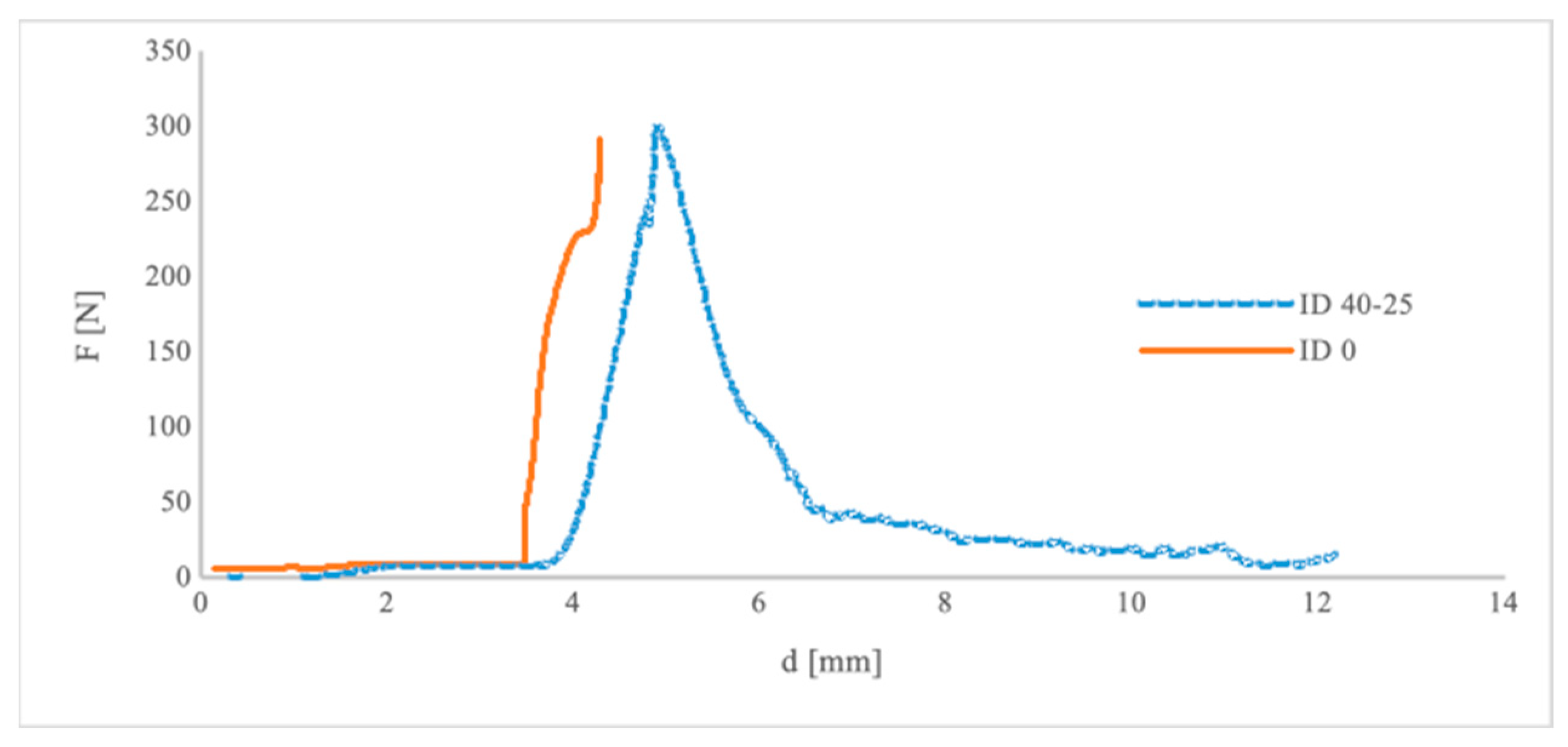
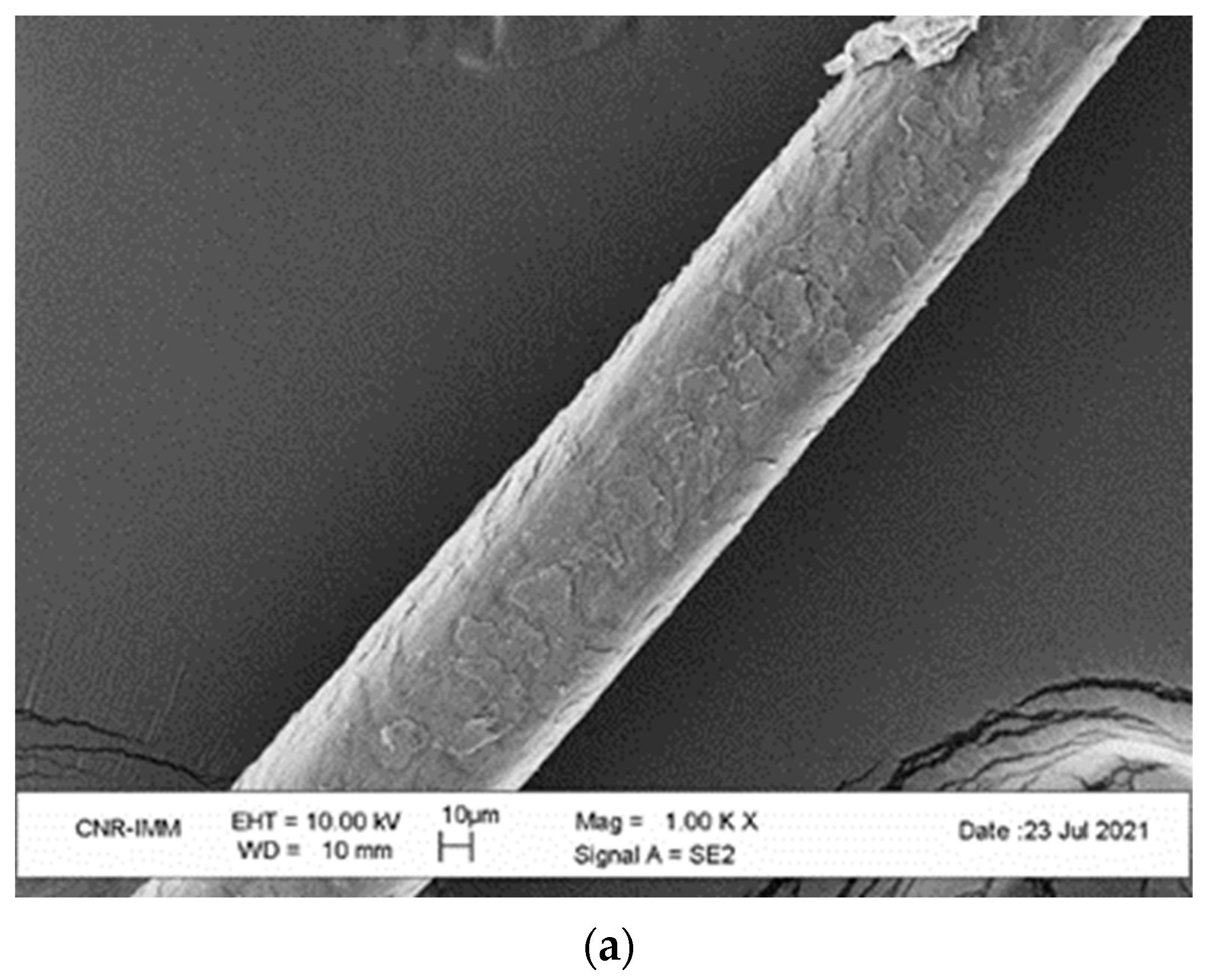
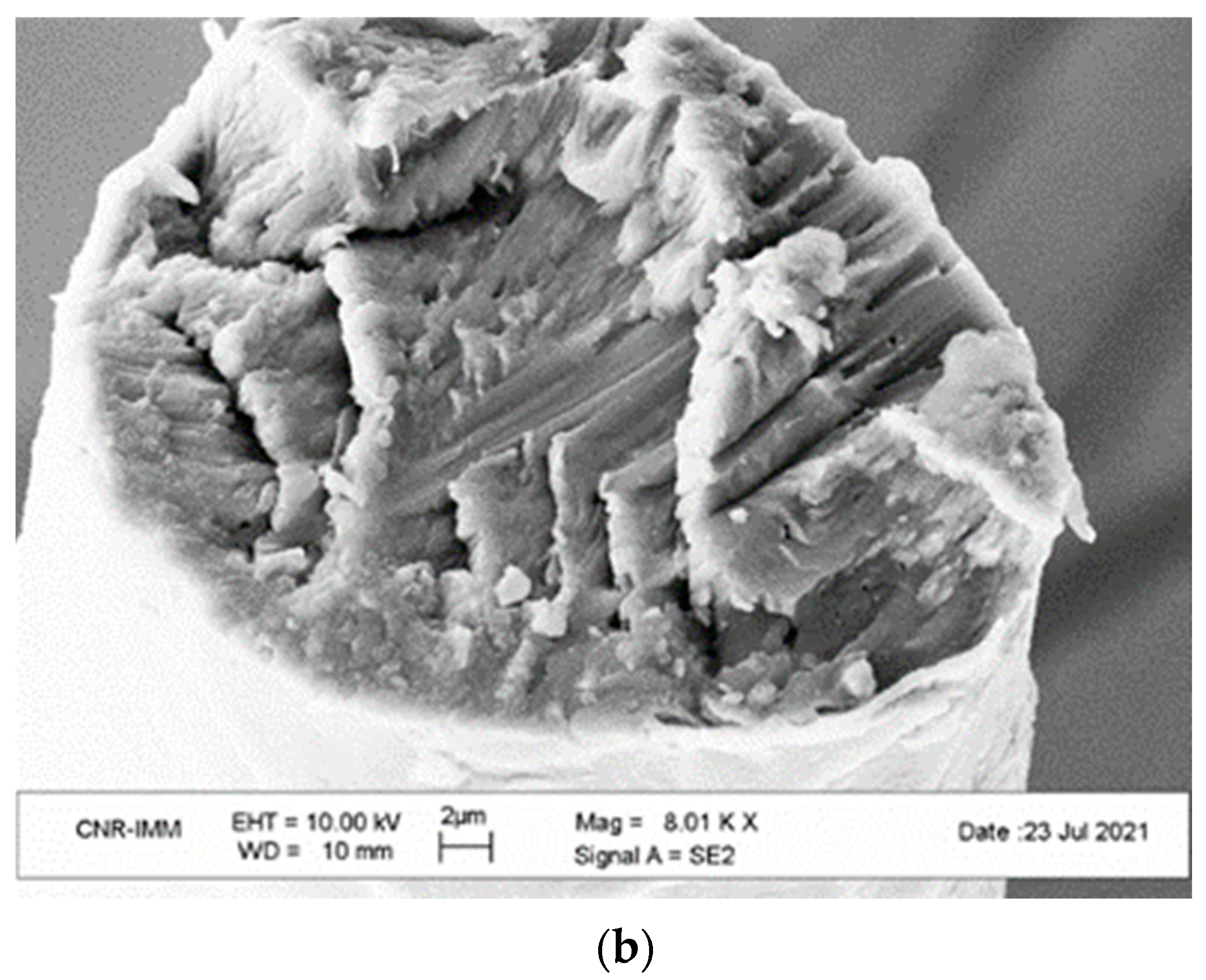
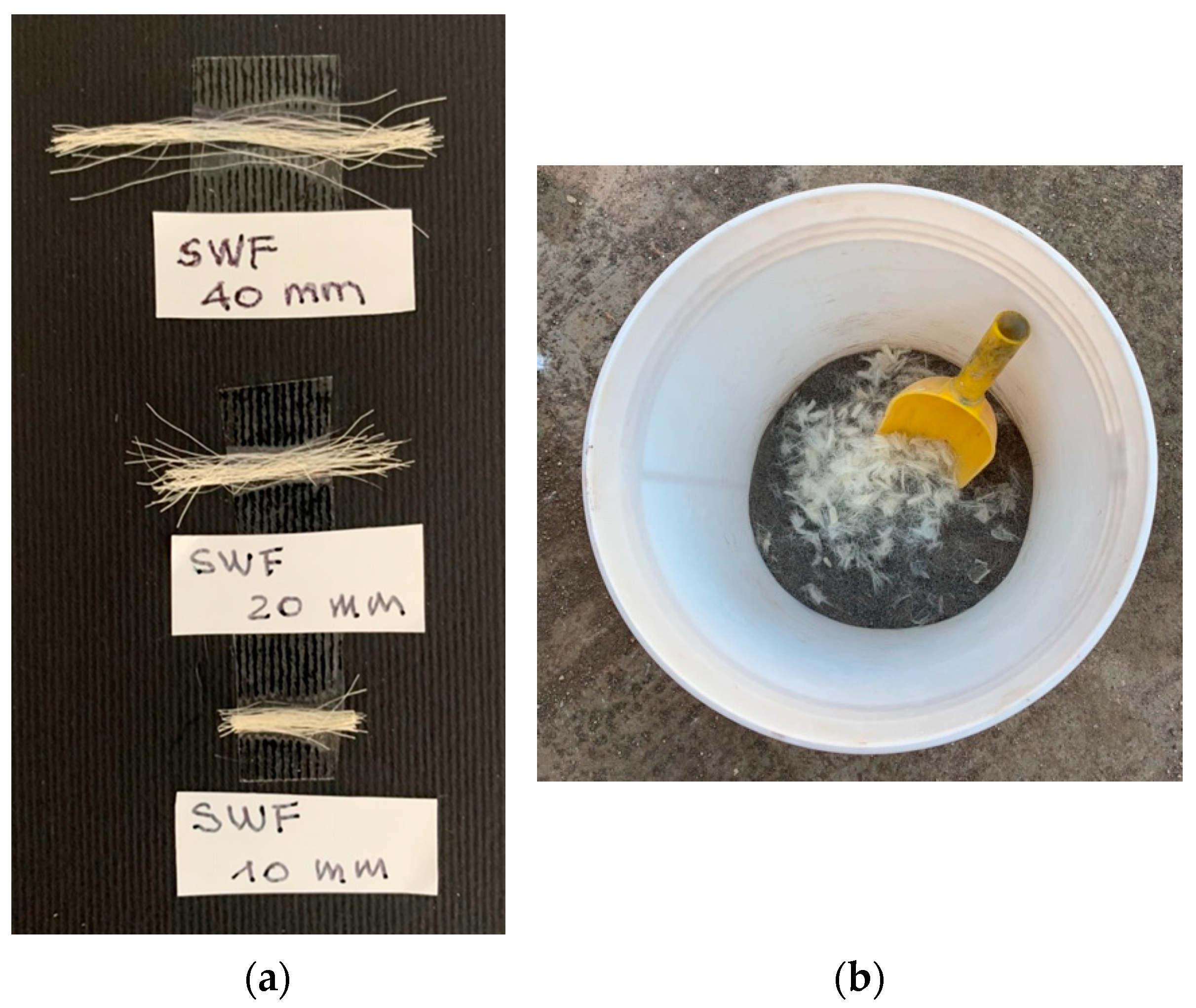
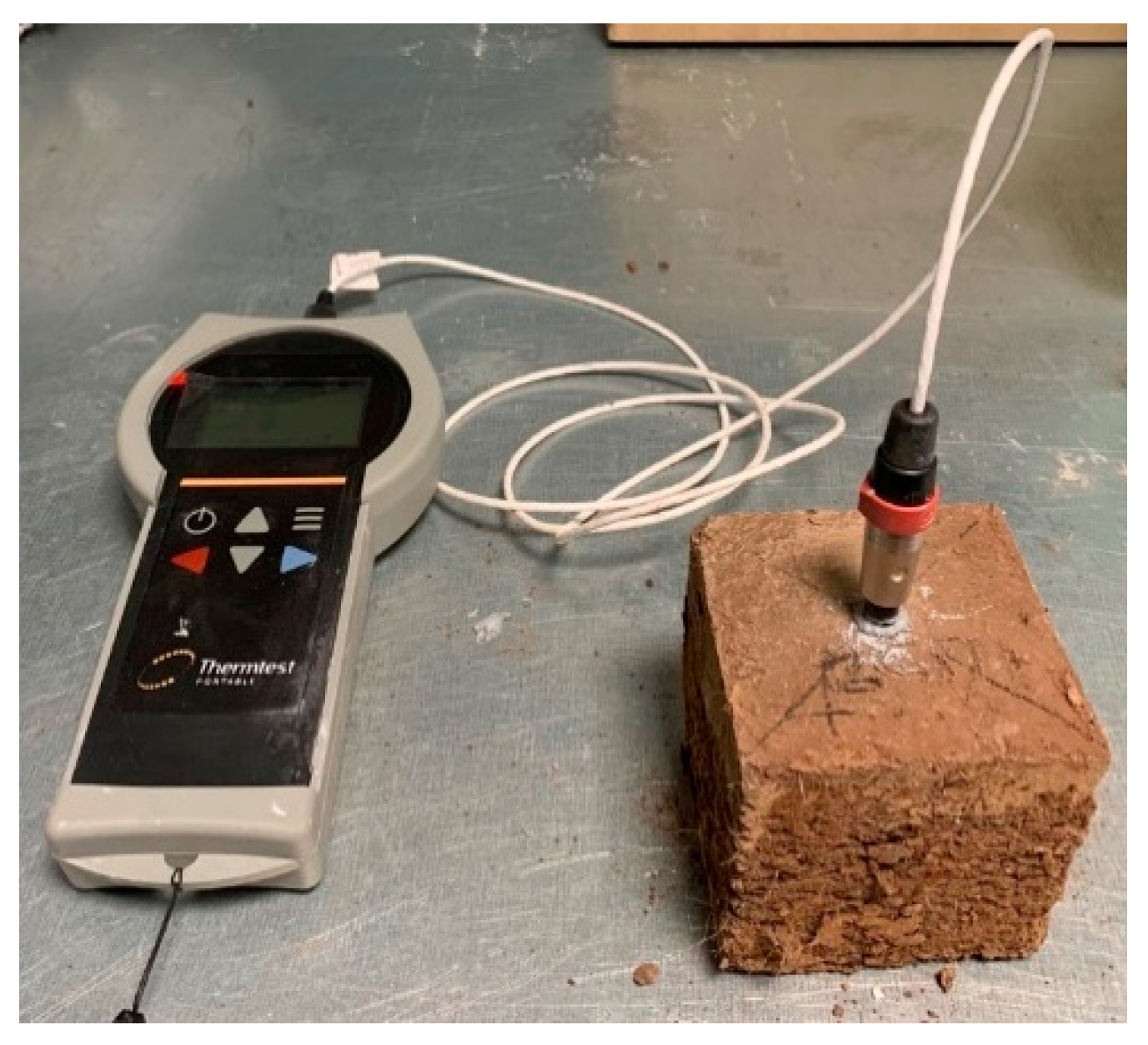


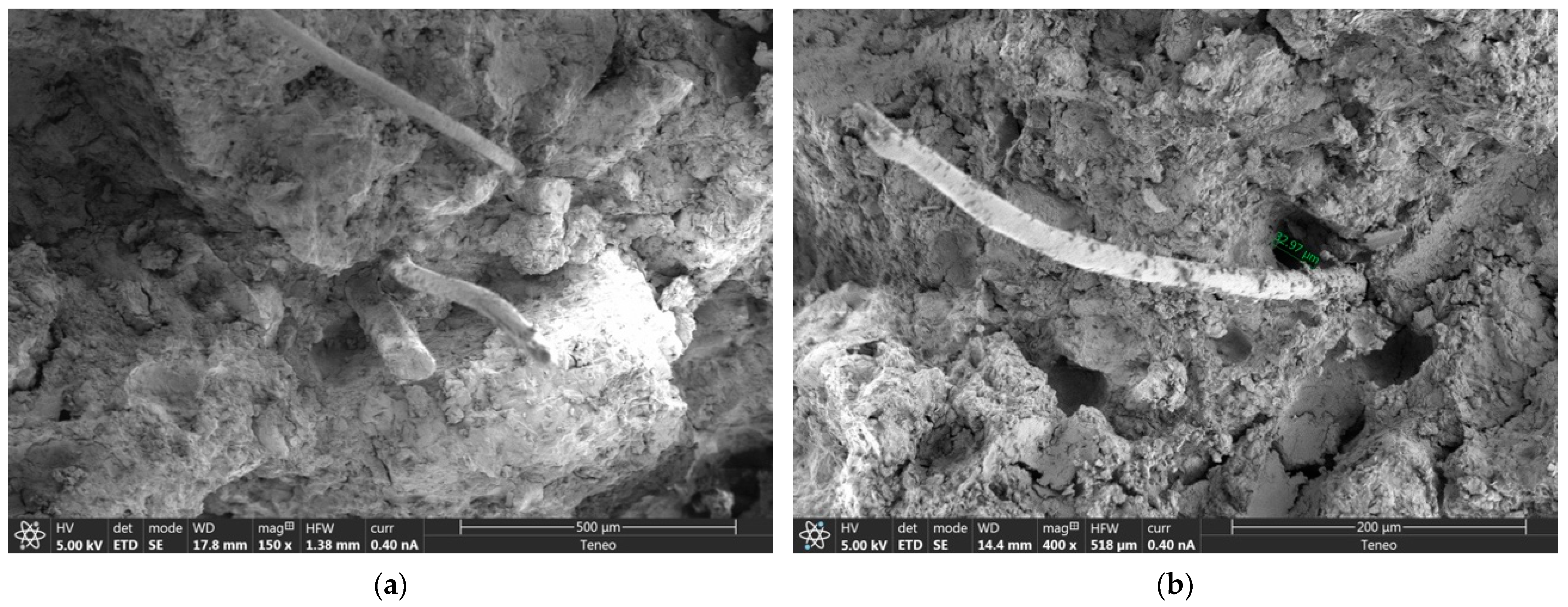


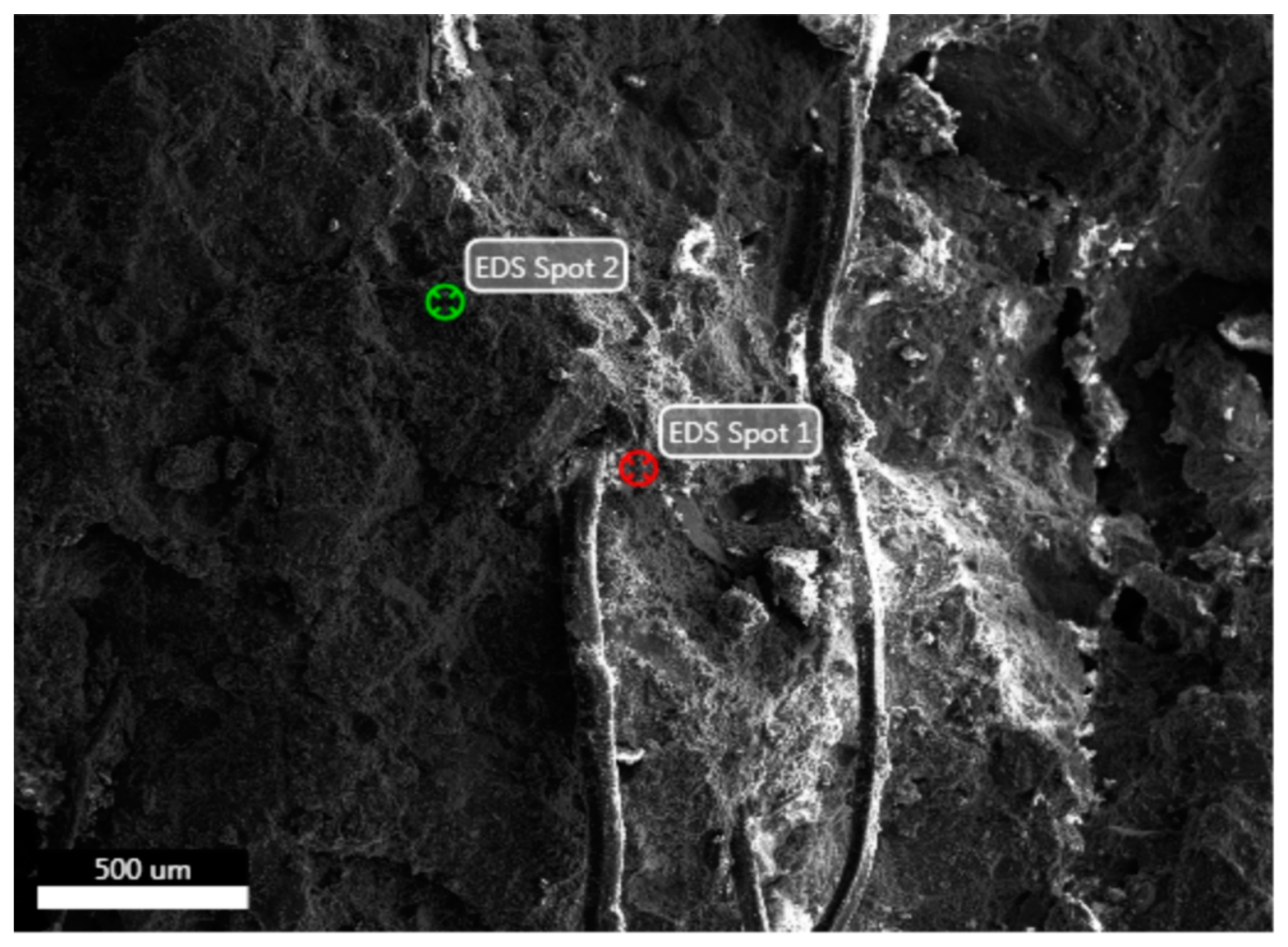
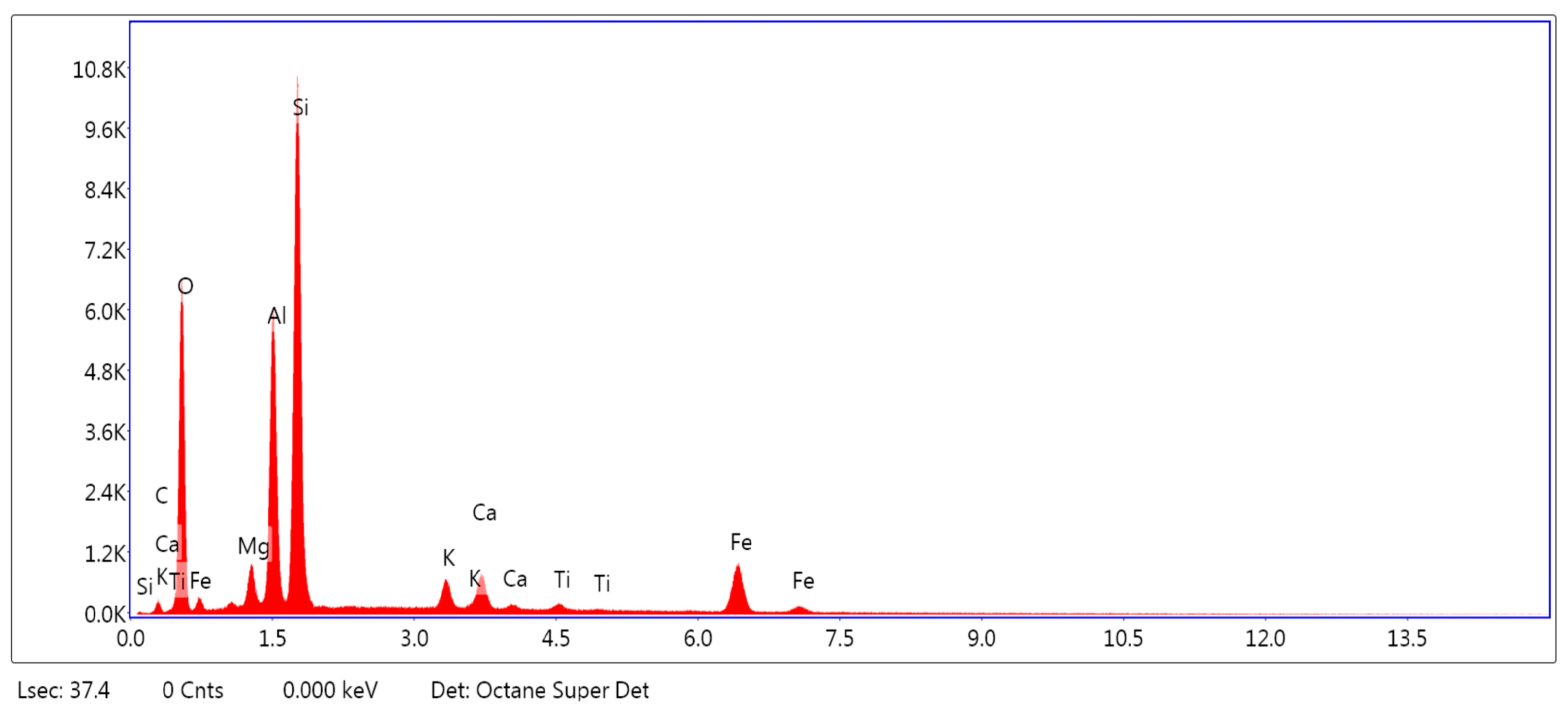
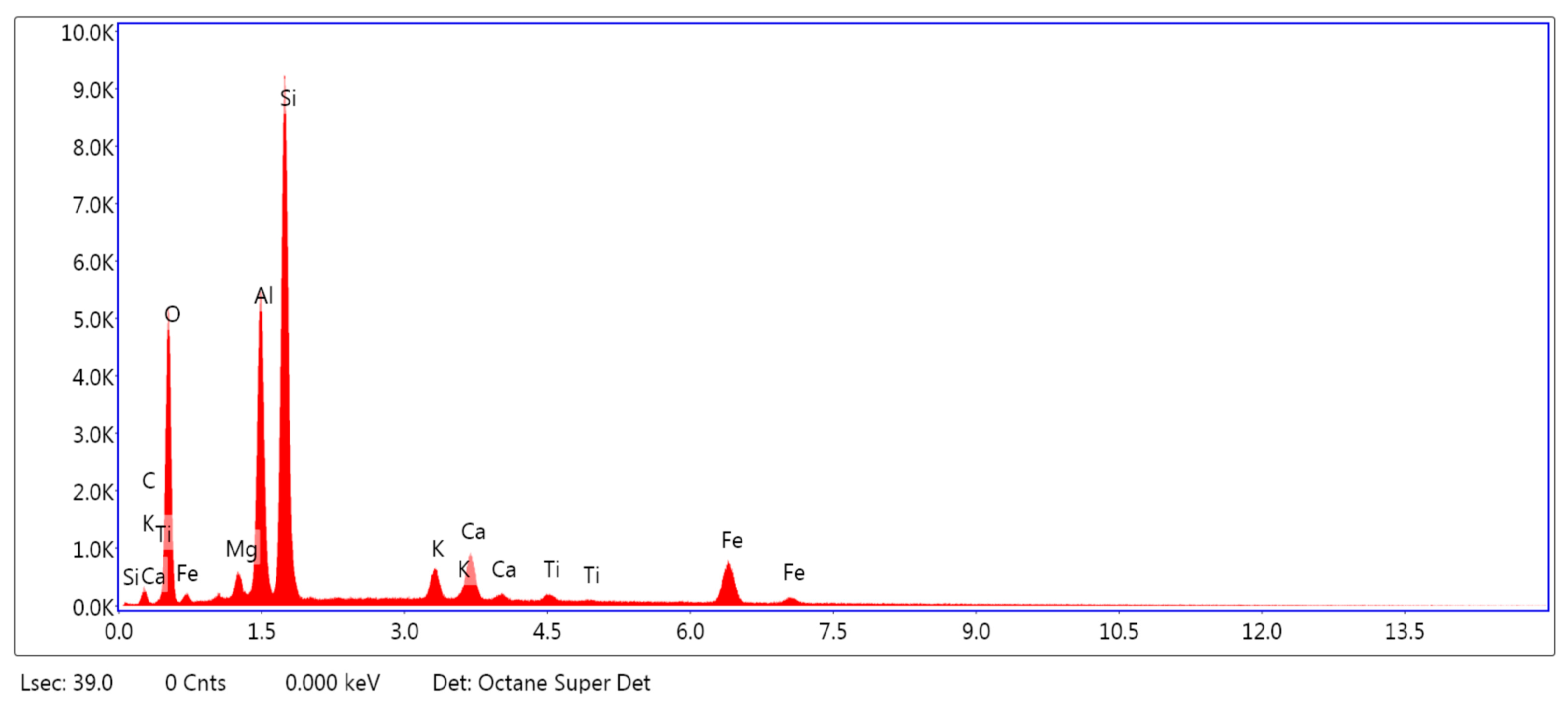
| Material | Density [kg/m3] | Thermal Conductivity [W/mK] |
|---|---|---|
| NRE (natural rammed earth) | 1400–2200 | 1–1.4 |
| SRE (stabilised rammed earth) | 2000–2100 | 0.8–1 |
| SRL (stabilised rammed limestone) | 2100 | 1.1 |
| SRL + bulk insulation | 1800–1500 | 0.8–05 |
| CEBs (compressed earth blocks) + coconut fibres | 1700–1500 | 0.9–0.7 |
| CEBs + Alfa fibres | 3000–2500 | 1.5–1.17 |
| Physical Characteristics | [%] |
|---|---|
| Liquid Limit (LL) | 47.30 |
| Plastic Limit (PL) | 30.68 |
| Plasticity Index (PI) | 16.62 |
| FSM (%) |  | Floridia Soil 58 % | Sand (%) | Water (%) |
|---|---|---|---|---|
| Clay 42% | ||||
| 45 | 35 | 20 | ||
| Number of Samples | Number of Repetitions | Test Purpose | Specimen’s Type |
|---|---|---|---|
| 16 | 4 | Thermal Conductivity | Cube (100 × 100 × 100) |
| Wool [%] | SWF Length [mm] | Mix | |
| - | - | ID 0 | |
| 0.25 | 10 | ID 10–25 | |
| 0.25 | 20 | ID 20–25 | |
| 0.25 | 40 | ID 40–25 | |
| Linear Shrinkage Rate [%] | Dry Density [kg/m3] | Average Compression Strength [MPa] | Average Flexural Strength [MPa] | Wt [%] | Fibre Length [mm] | Mix | ||||
|---|---|---|---|---|---|---|---|---|---|---|
| μ | σ | μ | σ | μ | σ | μ | σ | |||
| 0.25 | 6.25 | 0.05 | 1960.0 | 0.43 | 3.05 | 0.18 | 0.89 | - | - | ID 0 |
| 0.36 | 4.35 | 0.03 | 1904.3 | 0.29 | 3.14 | 0.16 | 0.68 | 0.25 | 10 | ID 10–25 |
| 0.34 | 4.75 | 0.08 | 1890.0 | 0.35 | 3.13 | 0.17 | 0.78 | 0.25 | 20 | ID 20–25 |
| 0.33 | 4.84 | 0.03 | 1844.5 | 0.35 | 2.97 | 0.19 | 0.88 | 0.25 | 40 | ID 40–25 |
| λ[W/mK] T = 20° HR = 70% | λ[W/mK] T = 20° HR = 50% | λ[W/mK] T = 20° HR = 30% | ρ [g/cm3] | Wool [%] | Wool Length [mm] | Mix ID |
|---|---|---|---|---|---|---|
| 0.92 | 0.801 | 0.669 | 1.94 | - | - | ID 0 |
| 0.90 | 0.787 | 0.705 | 1.90 | 0.25 | 10 | ID 10–25 |
| 0.96 | 0.719 | 0.654 | 1.93 | 0.25 | 20 | ID 20–25 |
| 1.00 | 0.736 | 0.670 | 1.89 | 0.25 | 40 | ID 40–25 |
| Shrinkage Range (μm) | Wool Length | |
|---|---|---|
| 1st | 0–59.90 | 10 mm |
| 2nd | 0–49.33 | 20 mm |
| 3rd | 0–41.40 | 40 mm |
| Formula | Atomic % | Weight % | Element |
|---|---|---|---|
| CO2 | 3.21 | 1.73 | C K |
| O | 56.24 | 40.43 | O K |
| MgO | 1.76 | 1.93 | MgK |
| Al2O3 | 11.14 | 13.51 | AlK |
| SiO2 | 19.67 | 24.83 | SiK |
| K2O | 1.31 | 2.29 | K K |
| CaO | 1.86 | 3.36 | CaK |
| TiO2 | 0.35 | 0.75 | TiK |
| FeO | 4.45 | 11.18 | FeK |
| Formula | Atomic % | Weight % | Element |
|---|---|---|---|
| CO2 | 6.10 | 3.32 | C K |
| O | 54.05 | 39.21 | O K |
| MgO | 0.90 | 0.99 | MgK |
| Al2O3 | 11.38 | 13.93 | AlK |
| SiO2 | 19.22 | 24.47 | SiK |
| K2O | 1.46 | 2.59 | K K |
| CaO | 2.54 | 4.62 | CaK |
| TiO2 | 0.41 | 0.89 | TiK |
| FeO | 3.94 | 9.98 | FeK |
Disclaimer/Publisher’s Note: The statements, opinions and data contained in all publications are solely those of the individual author(s) and contributor(s) and not of MDPI and/or the editor(s). MDPI and/or the editor(s) disclaim responsibility for any injury to people or property resulting from any ideas, methods, instructions or products referred to in the content. |
© 2023 by the authors. Licensee MDPI, Basel, Switzerland. This article is an open access article distributed under the terms and conditions of the Creative Commons Attribution (CC BY) license (https://creativecommons.org/licenses/by/4.0/).
Share and Cite
Parlato, M.C.M.; Porto, S.M.C.; Galán-Marín, C.; Rivera-Gómez, C.A.; Cuomo, M.; Nocera, F. Thermal Performance, Microstructure Analysis and Strength Characterisation of Agro-Waste Reinforced Soil Materials. Sustainability 2023, 15, 11543. https://doi.org/10.3390/su151511543
Parlato MCM, Porto SMC, Galán-Marín C, Rivera-Gómez CA, Cuomo M, Nocera F. Thermal Performance, Microstructure Analysis and Strength Characterisation of Agro-Waste Reinforced Soil Materials. Sustainability. 2023; 15(15):11543. https://doi.org/10.3390/su151511543
Chicago/Turabian StyleParlato, Monica C. M., Simona M. C. Porto, Carmen Galán-Marín, Carlos Alberto Rivera-Gómez, Massimo Cuomo, and Francesco Nocera. 2023. "Thermal Performance, Microstructure Analysis and Strength Characterisation of Agro-Waste Reinforced Soil Materials" Sustainability 15, no. 15: 11543. https://doi.org/10.3390/su151511543
APA StyleParlato, M. C. M., Porto, S. M. C., Galán-Marín, C., Rivera-Gómez, C. A., Cuomo, M., & Nocera, F. (2023). Thermal Performance, Microstructure Analysis and Strength Characterisation of Agro-Waste Reinforced Soil Materials. Sustainability, 15(15), 11543. https://doi.org/10.3390/su151511543












